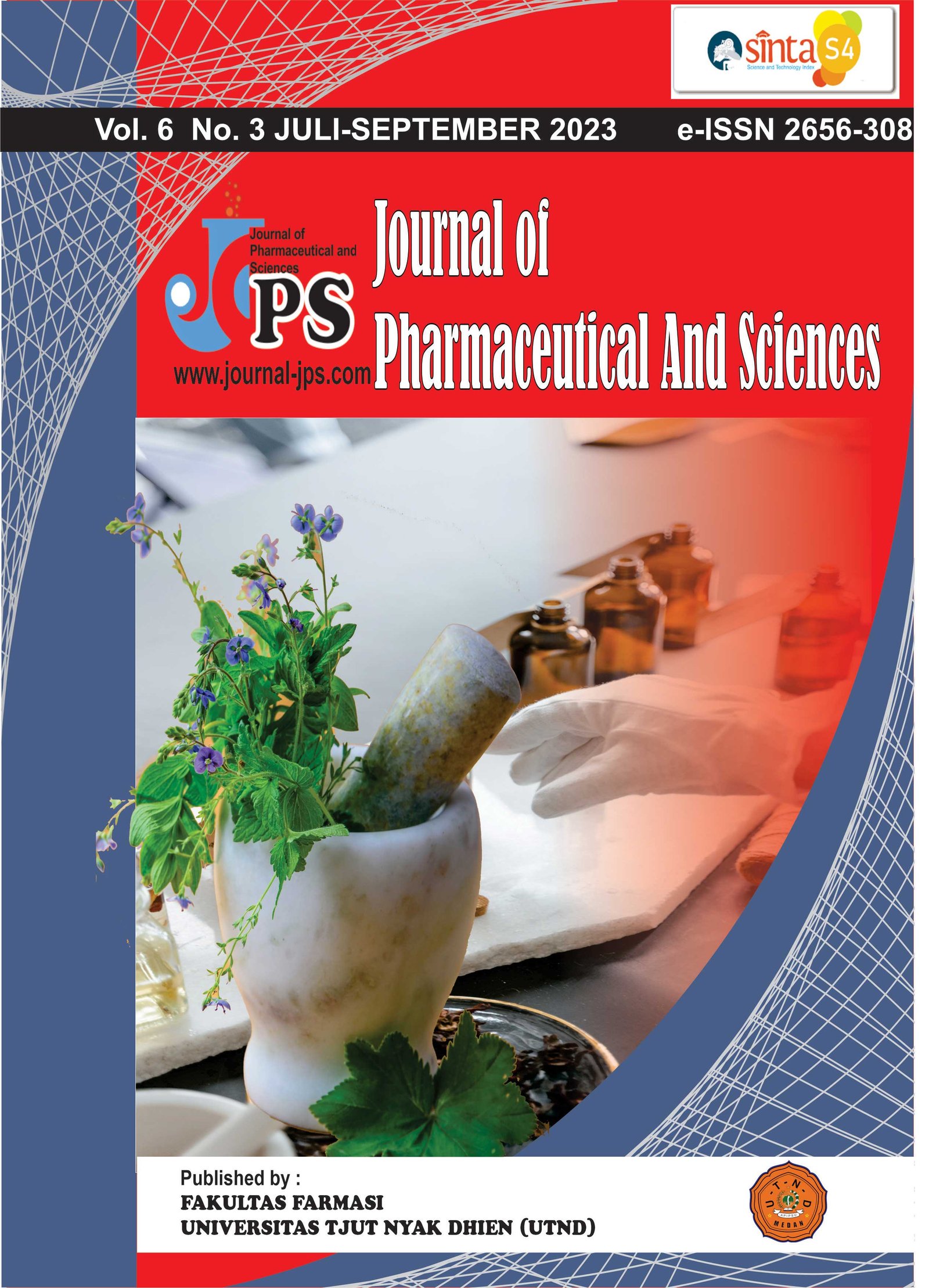Evaluation Quality test of papaya seed extract (Carica papaya L.) which is extraction in maseration with ethanol solvent 70%
Main Article Content
Page: 1303-1312
Abstract
Background : In papaya seed (Carica papaya L.) the bitter taste is caused by carpain alkaloid content. Carpain is an alkaloids free class of alkaloids. This carpain alkaloid can lower blood pressure, kill amoeba, bladder stones, urinary tract, and worms. But often found traditional medicine that does not produce the expected effect, generally due to not meet the quality standard or it could be due to misinformation and mistaken assumption against traditional medicine. In terms of side effects it is recognized that traditional medicine has relatively small side effects compared to modern medicine. Therefore, researchers are interested to make a quality and efficacious extract, thus the herbal products can be maintained quality, quality and efficacy that can cure various diseases. Objectives : To find out the percentage of yield of extract after maceration of papaya seed extraction, secondary metabolite identification and characterization of papaya seed by using 70% ethanol solvent. Method : The samples used in this research are Bangkok papaya fruit seeds from Jl. Student, Ex. Marindal, Kec. Patumbak, Kab. Deli Serdang, North Sumatra. Sampling is done purposively without comparing with the same sample from other regions. This research uses experimental laboratory experimental design consist of several stages including: sample collection, making simplicia, making of extract, identification of secondary metabolite compound, and quality test of papaya seed extract (Carica papaya L.) by maceration method. Results : In result of rendement have obtained extract of ethanol thick with percentage of rendement extract equal to 15,672% from 500 gram simplicia papaya seeds. In phytochemical screening test, the compounds contained in the extract of ethanol papaya seeds seeds are alkaloids, flavonoids, saponins, steroids / triterpenoids, and tannins and on the characterization test of papaya seed extract obtained water content of 1.15%, water soluble juice content of 46.35 %, ethanol soluble content of 18.61%, total ash content of 7.25% and 0.92% acid soluble ash content that meets the extract requirements set by MMI. Conclusion : It is known that the yield after the paperasi seed extraction is done, the secondary metabolite results show negative results only on the cyanogenic glycoside test, and the characterization test has met the requirements set by MMI.
Downloads
Article Details

This work is licensed under a Creative Commons Attribution-NonCommercial-ShareAlike 4.0 International License.
References
Anonim (1976). Departemen Ksehatan Republik Indonesia tentang Undang-undang tentang alat kosmetik dan kesehatan.
Anonim. (1985). Formularium Kosmetik Indonesia. Jilid IV. Jakarta: Departemen kesehatan Republik Indonesia. Hal 83, 85, 195-197.
BPOM RI. (2003). Keputusan Kepala Badan Pengawas Obat dan Makan Republik Indonesia. No HK.00.05.4.1745 Tentang Kosmetik.
Ditjen POM. (1985). Formularium Kosmetik Indonesia. Jakarta: Departemen Kesehatan Republik Indonesia.
Ernawati, Dian, Uswatun, Nurul Hidayah (2017). Optimasi Formulasi Sediaan Lipstik mengandung ekstrak Ubi Jalar Ungu (Ipamoea Batatas L). Prosiding Rapat Kerja Fakultas Ilmu Kesehatan
Firdaus, R. (2006). Telaah kandungan kimia ekstrak metanol umbi bawang tiwai (Eleutherine Americana (L) Merr.) Skripsi. Institut Teknologi Bandung.
Gardjito, M. (2013). Bumbu Penyedap Dan Penyerta Masakan. Indonesia Jakarta:PT Gramedia Pustaka Utama.Hal 56.
Hara H, Maruyama N, Yamashita Shita, hayashi Y, Lee KH, Batow KF, Chairul, Marutomo R danImakura Y. Elecanin a novel a napthoquinon Mareicana. Chem Pharm Bull : 1997, 45.
Hardayani, Fransiska Vita, dkk (2015). Formulasi Sediaan Lipstik menggunakan ekstrak buah naga merah (Hyloceraeus costaricensis) sebagai zat warna alami. Universitas Pakuan, Bogor.
Permadi, A (2006) Tanaman Obat Pelancar Air Seni.Mekarsari. Penerbit Penebar Swadaya Wisma Hijau Depok. Hal 62-63.
Pracima, R. (2015) Pemanfaatan Ekstrak Ubi Jalar Ungu (Ipomea batatas (L) Poir) Sebagai Zat Warna Pada Sediaan Lipstik.Skripsi. Jakarta. Fakultas Kedokteran Dan Ilmu Kesehatan Program Studi Farmasi. Hal 19-20.
Putri, R. A. (2016) Ekstrak Biji Kesumba Keling (Bixa orellana Linn) Sebagai Pewarna Alami Kayu Sengon (Paraserianthes Falcataria Linn).
Risnawati, dkk (2012). Formulasi menggunakan Ekstrak Biji Coklat (theobroma cacao L). Sebagai pewarna. Fakultas Farmasi Universitas Sumatera Utara. Medan
Supriyatna, A. Z., (2017) Formulasi Dan Aktivitas Penangkapan Radikal Bebas Ekstrak Kulit Terung Ungu (Solanum melongena L.) Dalam Sediaan Lipgloss. Skripsi. Purwokerto. Fakultas Farmasi UMP. Hal 26.
Widayanti, A., Sarteka, F., Sutyasningsih (2014) Pengaruh Peningkatan Konsentrasi Cera Alba Sebagai Wax Terhadap Nilai Viskositas Lipgloss Sari Buah Bit (Beta Vulgaris L). Jurnal Farmasains vol 2 No. 4. Hal 159-161.
Sari, L.O.R.K. (2006). Pemanfaatan Obat Tradisional Dengan Pertimbangan Manfaat Dan Keamanannya, Majalah Ilmu Kefarmasian.Vol. 3. No. 1. Hal. 1-7.
Walansendow, R., Janette M, Ran Lydia, T. (2016). Pengaruh pemberian ekstrak biji pepaya (Carica papaya L.) terhadapkualitas spermatozoa tikus Wistar (Rattus norvegicus).Jurnal e-Biomedik. Hal. 1–4.





